 In the ever-evolving landscape of the publishing world, authors are faced with a crucial decision: indie publishing or traditional publishing. Each path offers unique opportunities and challenges that can significantly impact an author’s journey to bring their work to the world. Indie publishing, characterized by its autonomy and creative control, allows authors to navigate the publishing process on their terms. On the other hand, traditional publishing, with its established infrastructure and resources, offers a more conventional route to reaching a broader audience. Understanding the distinctions between these two approaches is essential for authors seeking the most suitable path to share their stories with the world.
In the ever-evolving landscape of the publishing world, authors are faced with a crucial decision: indie publishing or traditional publishing. Each path offers unique opportunities and challenges that can significantly impact an author’s journey to bring their work to the world. Indie publishing, characterized by its autonomy and creative control, allows authors to navigate the publishing process on their terms. On the other hand, traditional publishing, with its established infrastructure and resources, offers a more conventional route to reaching a broader audience. Understanding the distinctions between these two approaches is essential for authors seeking the most suitable path to share their stories with the world.
Indie Publishing vs Traditional Publishing
Indie publishing and traditional publishing represent two distinct paths within the dynamic realm of the publishing industry. While indie publishing offers authors autonomy and creative control over their work, traditional publishing provides access to established infrastructure and resources for reaching a broader audience. Understanding the differences between these two approaches is crucial for authors seeking the most suitable path to share their stories effectively.
Pros and Cons of Indie Publishing
 Indie publishing, also known as self-publishing, offers authors a range of benefits along with certain challenges. Understanding the advantages and drawbacks of indie publishing can help authors make informed decisions about their publishing journey.
Indie publishing, also known as self-publishing, offers authors a range of benefits along with certain challenges. Understanding the advantages and drawbacks of indie publishing can help authors make informed decisions about their publishing journey.
Indie publishing provides authors with unparalleled flexibility and creative control over every aspect of their book, from content to design. Authors can choose their own cover art, formatting, release schedule, and pricing without external interference. This freedom allows them to stay true to their artistic vision and make changes as needed without waiting for approvals from traditional publishing gatekeepers.
One of the major advantages of indie publishing is the potential for higher royalties and revenue. Authors retain a more significant percentage of their book sales revenue compared to traditional publishing contracts. With direct access to online platforms like Amazon Kindle Direct Publishing, authors can earn up to 70% royalties on ebook sales and 60% on paperback sales, maximizing their earnings per copy sold.
Key Differences Between Indie Publishing and Traditional Publishing
Detailing the financial aspects, traditional publishing offers authors significant advances and royalties, providing financial security before the release date. Authors are typically paid advances against royalties, ensuring a steady income regardless of initial sales. Royalty rates with traditional publishers usually range from 10% to 15% of the book’s retail price, depending on the author’s contract and the publisher. This structure might guarantee stability but comes with lower royalty rates compared to indie publishing. Understanding these financial variations is essential for authors to make an informed decision about their publishing path.
Success Stories from Indie Authors
Indie publishing has provided numerous success stories for authors who have chosen this path. One notable example is the bestselling author Hugh Howey, who self-published his novel “Wool” in 2011. The book gained immense popularity among readers and eventually led to a six-figure book deal with a traditional publisher.
 Another indie author success story is Andy Weir, who self-published his science fiction novel “The Martian” online. The book gained a loyal following, prompting a traditional publishing house to acquire the rights. “The Martian” went on to become a bestseller and was later adapted into a successful film starring Matt Damon.
Another indie author success story is Andy Weir, who self-published his science fiction novel “The Martian” online. The book gained a loyal following, prompting a traditional publishing house to acquire the rights. “The Martian” went on to become a bestseller and was later adapted into a successful film starring Matt Damon.
These success stories highlight the opportunities that indie publishing can offer to authors in terms of creative freedom, direct connection with readers, and the potential for traditional publishing deals based on proven success in the market. Indie authors have shown that with dedication and strategic marketing efforts, it is possible to achieve commercial success and reach a wide audience without the support of a traditional publishing house.
In evaluating indie publishing versus traditional publishing, authors must weigh the benefits of creative freedom and higher royalties against the established infrastructure and broader audience reach that traditional publishing provides. Each path offers unique advantages, from financial security pre-release with traditional publishing to the potential for commercial success and direct reader connection with indie publishing.

